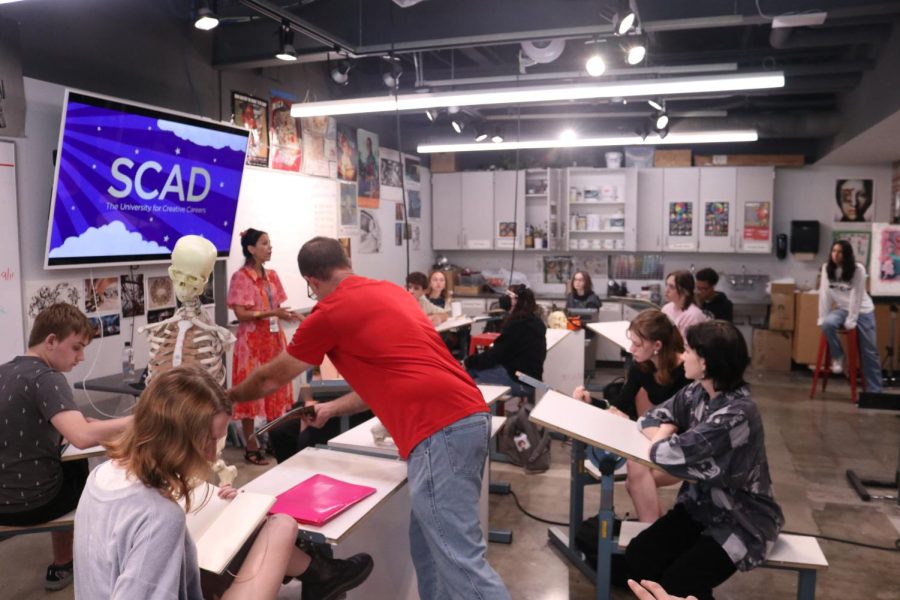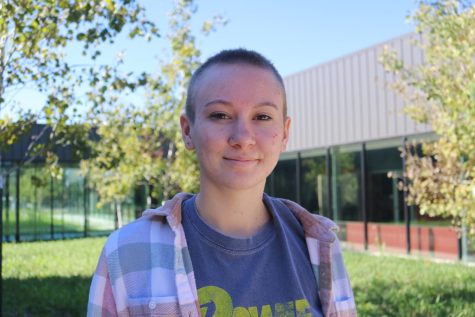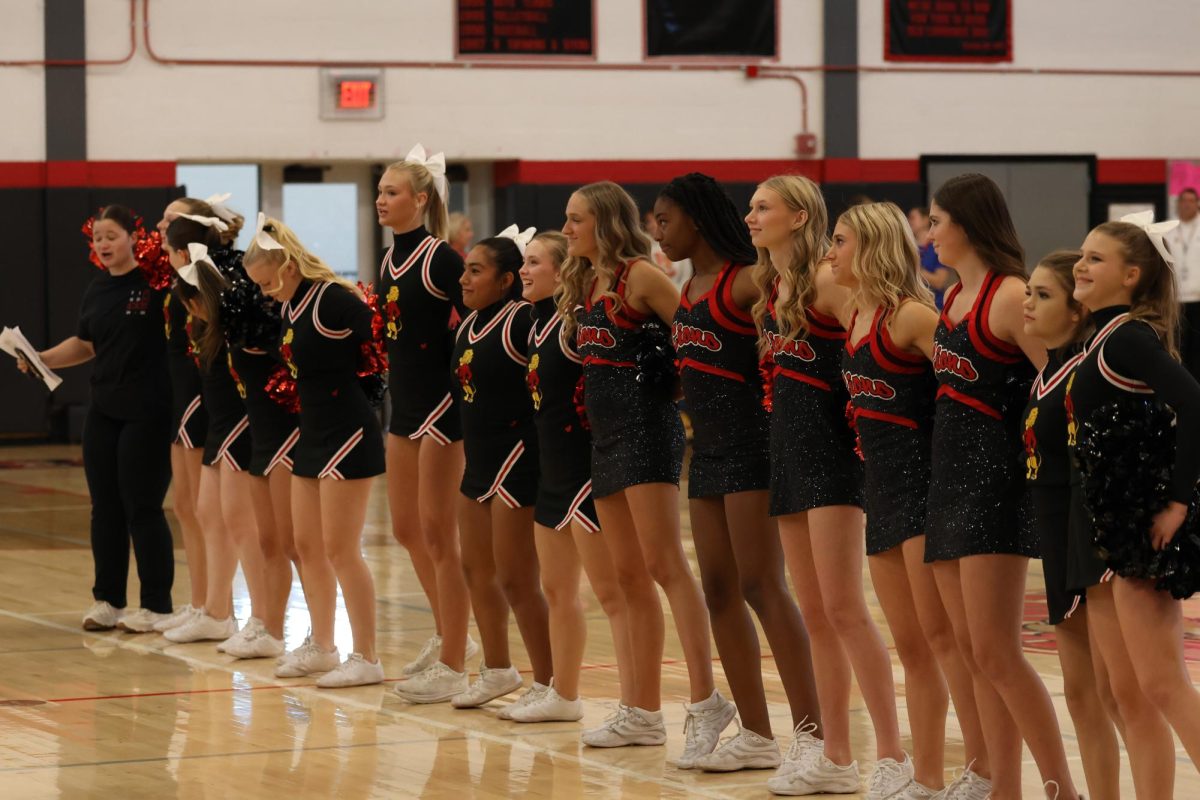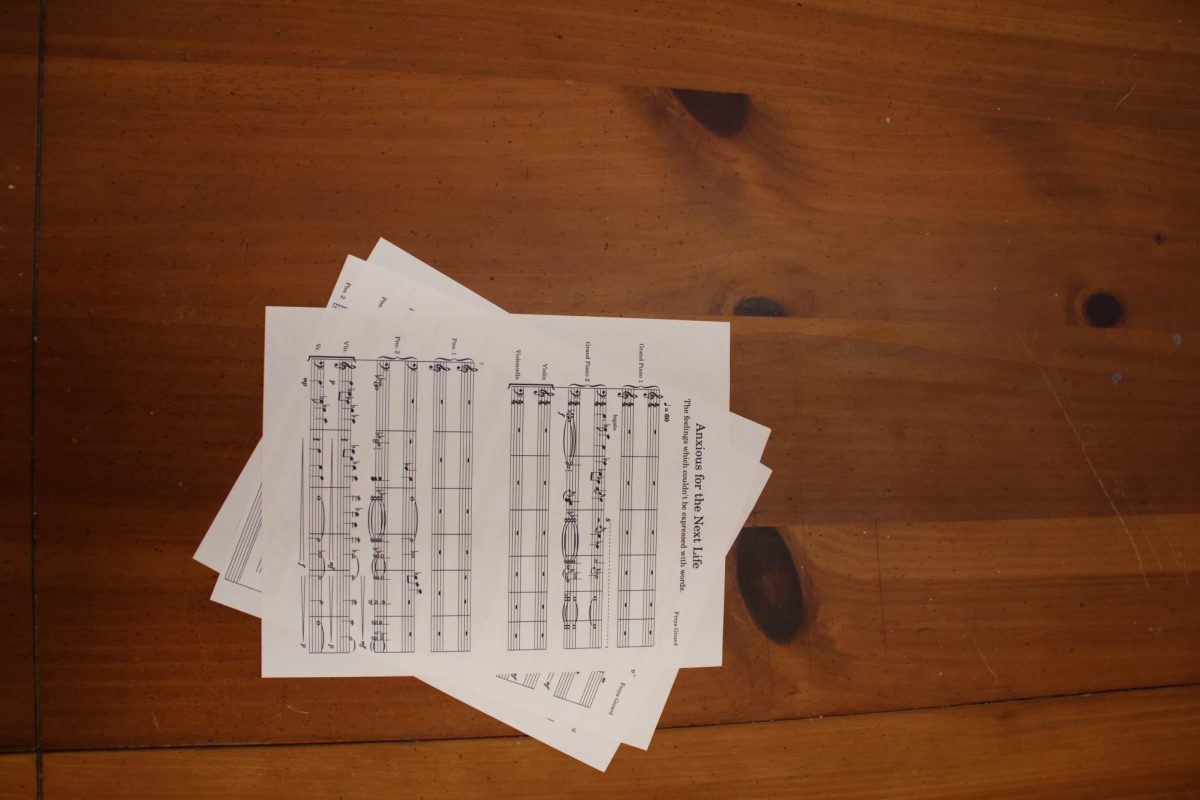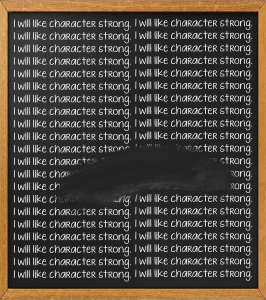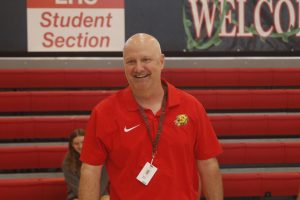The roots and results of Lawrence High’s largest class sizes in years
Students, teachers adjust to the chaos: are they sinking or swimming?
Todd Poteet’s nested art class, of more than 30 students, starts class as Poteet fields questions from his students.
September 12, 2022
Returning to school this fall has been shockingly normal considering the impact COVID-19 has had, but one eerie sight remains. A shocking number of classrooms in Lawrence High sit empty and abandoned.
While there are seemingly fewer teachers employed, student enrollment has not dropped. Instead, classrooms all over the school are filled with more than 30 students, a mark far exceeding the norm. Every department has seen overflowing classrooms, especially biology, drawing, and some English classes.
“This year, I’m teaching the biggest class I’ve ever taught. A few years I’ve taught where it’s been 26, 27 but never into the thirties,” said fourth-year Biology and Anatomy teacher Marci Leuschen, whose fourth-hour AP Biology class has 36 students, with some students having to find seats at lab benches as there aren’t enough desks.
It’s no shock that the district has been struggling with its budget. Over the past decade, state funding for public schools has decreased, and now, after the district has lost over 600 students, they’ve been scrambling to make up a deficit of more than $3 million, as well as trying to accommodate the demand for more staff.
“I mean, I think the district’s trying to do that the best that they can,” Leuschen said. “They’re in a no-win situation with this type of stuff. But you’re feeling the impact, now, for sure. You cut five [teachers]. It’s not that we have that many more kids; it’s because we had to cut five teachers.”
With a tightened budget, the district has been unable to accommodate student demand and hire enough staff to teach every class. In one extreme case, the AP and Portfolio drawing classes have been combined into one period due to an inadequate amount of art-based Career Technical Education (CTE) teachers.
“It’s a 30-person class, 30 people being in an advanced class,” said Todd Poteet, who teaches the nested AP and Portfolio classes. “The more advanced the class gets, the more individual time students need…and it really should have probably been divided into two classes, but, with the reduced number of teachers, we now have a greater need to fill slots.”
While Portfolio or AP may seem similar to some, the job becomes much harder for Poteet.
“I have two classes embedded that I’m having to teach two separate curriculums in the same hour, and to couple that with both of those groups are the most advanced groups that need the most attention individually.”
In addition to making it difficult to hire as many teachers as are needed, some budget cuts have led to classroom supplies and seats being more limited now than ever. Poteet said it has been challenging to get the various painting and drawing supplies he needs for his students, especially considering the art department budget has been cut to 25 percent of what it was before the COVID-19 pandemic, despite Poteet teaching more students than before.
“We’ll scrape the bottom of the barrel quite a bit,” Poteet said. “But we’re artists. We’ll get creative.”
Leuschen has also struggled with the science budget, even going so far as to pay for the materials for one of her anatomy labs herself.
“I just bought it myself because I want to do this lab. I don’t technically need to do this lab,” she said. “But the kids will have more fun if I do it. And so I threw out the 30 bucks for candy. Because I didn’t wanna eat into the budget.”
Regardless of the financial reasons for so many classes being so large this year, the effect this will have on students’ learning is unclear.
“So I think discussions are fun. I think there’s a little bit more energy in the class,” Leuschen said. “I like the bigger class in the sense that I think it will spark some discussions, but I do worry that some kids will get lost in the mix. That they’re not either comfortable speaking up with that many people in a class, or I just can’t get to everybody that I need to.”
Some students have found silver linings to the situation, as being able to interact with 30 other students at once has been helpful for them.
“It kind of helps me encourage others to continue drawing, and it also helps to focus for some reason,” junior Jerwin Rapada, who takes Poteet’s nested drawing class, said. “Because they also help me. It’s like everyone critiques each other’s art. It’s like a whole bonding system.”
But for many others, larger classes haven’t been as beneficial.
“I’d say it’s kind of harder to get a hold of the teacher, but other than that, you can just wait there and be patient,” junior Lily Norton said. “I’m accustomed to smaller classes. So, especially in an advanced setting, like an AP class, having less people in a room gives the teacher more time to come and talk to you individually, which will help you with the content. So I feel a bit crammed in there.”
Ideally, most higher-level advanced or AP classrooms have fewer than 20 students, which teachers enjoy, as they can pay better attention to the needs of every student. But that’s not always possible, and students may have to take more responsibility for learning what they need to.
“I think it definitely forces you to have a little more independence and [have] your own pace,” junior Brendan Symons said. “I feel like it’s sink or swim. It’s either you’re going to do well because you have to pretty much teach yourself all the material, or you’re not going to do well. And you’re just going to sink.”
Norton remarked that LHS should hire more teachers, expressing the wishes of staff and students alike. It remains to be seen what lies ahead regarding budget and staffing.
“This is why I vote and try to put educated people into those positions to make sure that they can make good choices for our public schools,” Leuschen said. “Because I can see when we make poor choices, it’s not great. But I still like my job, so I’ll take it!”



